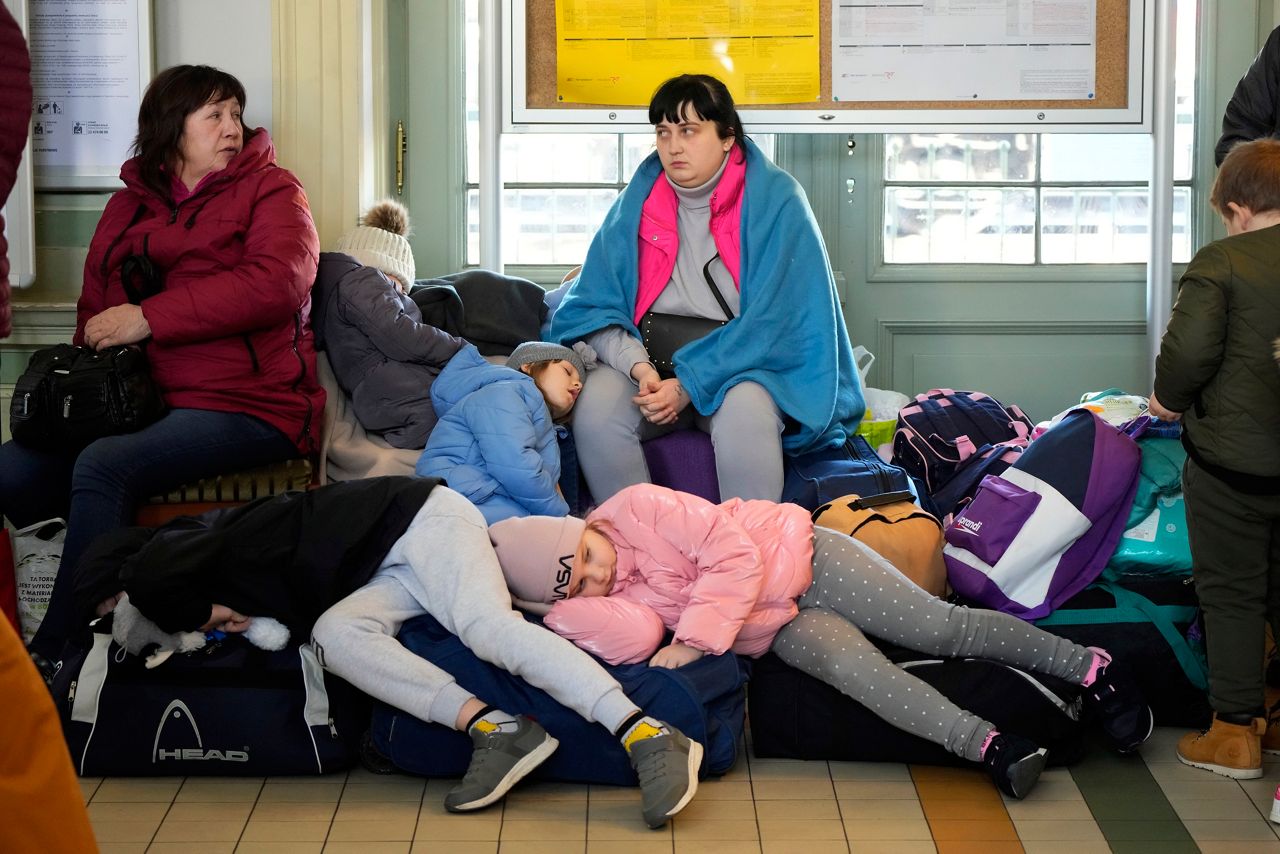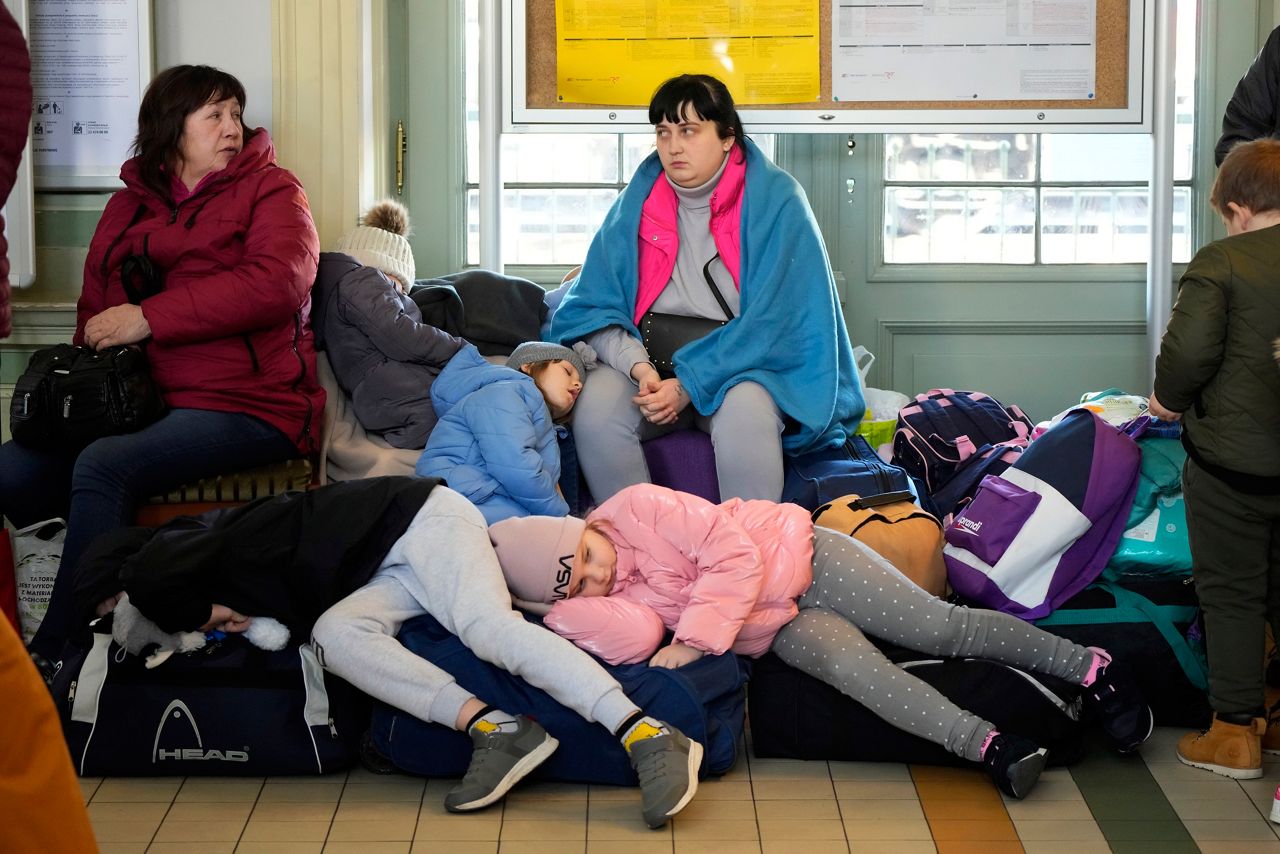When Mark learned on the night of Feb. 24 that Russian troops had begun their attack on his home country, he made a call from his home in New York to his parents in Ukraine to break the news that they wouldn’t make their flights to the United States.
They were scheduled to travel to Kyiv the very next day — Feb. 25 — to begin the journey.
“My brain told me no, it’s impossible,” he said of telling his parents to stay home.
“It was devastating to see my father’s face. I’m pretty sure it was his dream as well,” he told Spectrum News in an interview.
Mark — who asked not to go by his real name because he feels his parents are still in danger in central Ukraine — has been trying to reunite with his family since late 2017, after he became a U.S. citizen and applied for his parents to join him through the Lautenberg program. They were approved to travel this year, but now he doesn’t know when he’ll see them next.
Thousands of Lautenberg applicants like Mark’s parents are on hold as American diplomatic operations and visa processing remain suspended in Kyiv.
The program was created in 1990 to welcome Jews from the former Soviet Union, and it has since expanded to include Christians and people of other religious minorities who have close family in the U.S.
Typically, the U.S. admits a few thousand Ukrainian refugees each year, many of them joining family under the Lautenberg program, which is reauthorized by Congress annually and was again in March. Nearly 2,000 Ukrainians resettled in the United States in fiscal year 2020, for example, and another 4,451 the year before, according to State Department numbers.
Admissions have dropped off since the Russian invasion began: The U.S. admitted just 12 Ukrainian refugees in March, down from more than 425 the month prior.

FILE – Children from Ukraine sleep on luggage at a railway station in Przemysl, southeastern Poland, on Wednesday, March 23, 2022. The U.N. refugee agency says more than 5 million refugees have fled Ukraine since Russian troops invaded the country. The agency announced the milestone in Europe’s biggest refugee crisis since World War II on Wednesday, April 20, 2022. (AP Photo/Sergei Grits, File)
Mark’s parents, who are in their 80s, are vulnerable to Russian airstrikes while they wait, he said. He hears the sound of air-raid sirens in the background when he talks to them on the phone from their home.
“My mom cannot walk very well,” he said. “She told me, ‘Okay, I cannot physically get to shelter.’”
A State Department official told Spectrum News that they continue to process Lautenberg applications for people outside Ukraine through a satellite office in Moldova, even as Kyiv operations are on pause.
“We are exploring opportunities to increase access to case processing by expanding U.S. resettlement operations in Europe,” they added.
Meanwhile, Mark told Spectrum News he is afraid to risk helping his parents flee the country without a guarantee they’ll be able to soon join him in the U.S. safely. He says he’s gotten no response to about a dozen emails and calls to the International Organization for Migration, which finalizes travel for Lautenberg recipients.
Details meanwhile remain unclear about a broader promise from President Joe Biden last month to welcome up to 100,000 Ukrainian refugees through an “expedited” process. More than five million people have fled Ukraine, according to the United Nations’ latest estimate.
The U.S. refugee program has strict criteria and the process normally takes two years, on average, to complete.
Yet advocates say that program is the preferable option if the administration can speed it up somehow, since it leads to permanent status.
Other options are temporary, such as humanitarian parole, which allows people a year or two of protection but no pathway to residency. CNN has reported that a parole program for Ukrainians is in the works, similar to the one implemented for Afghans last year.
“That would mean that people have no path to permanent status, and therefore no control over their futures, which is something they desperately need right now,” said Melanie Nezer, senior vice president for global affairs for HIAS, which was founded to aid Jewish refugees.
Advocates acknowledge the U.S. is unlikely to resettle as many as 100,000 Ukrainians, a number the White House even admits is a maximum, not a guarantee.
“We’re often waiting and still waiting to see how that rhetoric is actually matched in reality,” said Sunil Varghese, policy director at the International Refugee Assistance Project.
A State Department spokesperson says they’re considering “all options to expand legal pathways” for Ukrainians while they expect many to “choose to remain in Europe close to family and their homes.”
“Everyone wants to be home. But it may not be possible for a long time,” Nezer said. “There’s no downside to giving Ukrainian refugees a choice to either go home or to make their lives here if this is the safer place for them.”
Mark told Spectrum News that having his parents join him was the final step in his journey to the U.S., which began when he moved in 2011 with his wife and two young sons.
“It was my dream,” he said. “You want freedom. You want democracy.”
His parents have already given up their pension in Ukraine under the conditions of their move, and they had shipped their belongings to him in New York in preparation.
“It could be a couple of days, it could be a couple of years. But we don’t have [a] couple of years,” he said.




